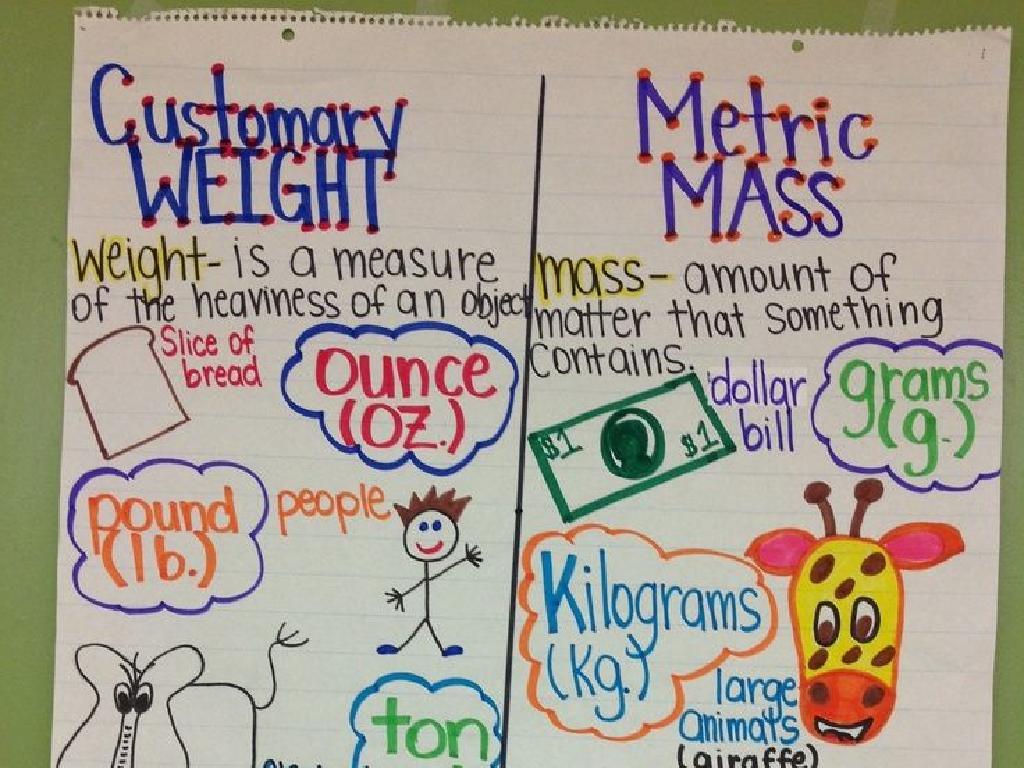Country Profile: China
Subject: Social studies
Grade: Seventh grade
Topic: Asia: Society And Environment
Please LOG IN to download the presentation. Access is available to registered users only.
View More Content
Exploring China: Ancient History and Modern Power
– Asia’s diverse environments
– Home to deserts, rivers, and mountains
– China’s ancient to modern journey
– From the Great Wall to skyscrapers
– Significance of studying China
– Learn about a key player in world history and economy
– China’s global influence today
– A leading economy with a rich cultural heritage
|
This slide introduces students to the vast continent of Asia, highlighting its varied environments, from the Gobi Desert to the Yangtze River. The focus then shifts to China, a country with a rich tapestry of history that stretches from ancient civilizations to its current status as a global powerhouse. Understanding China’s evolution is crucial for students as it provides insights into how historical events shape modern societies. China’s role on the world stage, including its economic, political, and cultural influence, makes it an important subject of study for students to appreciate the interconnectedness of global communities.
Exploring China’s Geography
– China’s diverse landscapes
– Mountains, rivers, plains dominate the terrain
– Rivers shaping civilization
– Yellow River, Yangtze River: Cradles of ancient cultures
– Varied climate zones
– From tropical in the south to subarctic in the north
– Abundant natural resources
– Rich in coal, rare earths, and a variety of minerals
|
This slide aims to give students a broad overview of China’s geography, which is as diverse as its culture. Emphasize the vastness of China’s landscape, which includes some of the world’s highest mountains, longest rivers, and largest plains. Highlight the historical and cultural significance of the Yellow and Yangtze Rivers, often referred to as the birthplace of Chinese civilization. Discuss the wide range of climate zones, from the tropical zones in the south to the harsh subarctic in the north, and how these climates affect the lives of the people living there. Lastly, touch upon China’s rich deposits of natural resources, which play a crucial role in its economy. Encourage students to think about how geography can influence a country’s culture, economy, and global interactions.
Exploring China: History and Culture
– Overview of Chinese history
– From ancient dynasties to modern times, key events shaped China.
– Cultural highlights of China
– Mandarin is the official language, with diverse festivals like Chinese New Year.
– Significance of the Great Wall
– A symbol of defense and cultural significance, stretching over 13,000 miles.
– Impact on modern China
|
This slide aims to give students a snapshot of China’s rich history and vibrant culture. Begin with a brief overview of China’s dynastic past, touching on significant events that have shaped the nation’s development. Highlight the cultural aspects such as the predominant language, Mandarin, and popular festivals like the Chinese New Year and the Dragon Boat Festival, which are integral to Chinese society. Discuss the Great Wall’s historical role as a fortification against invasions and its current status as a UNESCO World Heritage site and symbol of Chinese ingenuity. Encourage students to reflect on how these historical and cultural elements influence modern China and its place in the world.
Modern China: Growth and Challenges
– China’s rapid economic growth
– China has become a global economic powerhouse, impacting international trade.
– Population surge and megacities
– China’s urban population has exploded, creating megacities like Shanghai and Beijing.
– Technological progress in China
– Innovations in technology, especially in manufacturing and digital sectors.
– Environmental concerns
– Rapid industrialization has led to pollution and ecological strain.
|
This slide aims to give students an overview of contemporary China, focusing on its significant economic development and the resulting global influence. Highlight China’s transformation into one of the world’s largest economies and its role in global trade. Discuss the population growth leading to the rise of megacities, which are cities with populations over 10 million, and the urbanization challenges they face. Explore China’s strides in technology, including advancements in green tech, AI, and telecommunications. Lastly, address the environmental issues that have arisen due to rapid growth, such as air and water pollution, and the steps being taken to mitigate these problems. Encourage students to think about the balance between economic development and environmental conservation.
Government and Economy of China
– China’s political structure
– China has a single-party system led by the Communist Party.
– China’s international trade impact
– China is a major global trader, influencing economies worldwide.
– Economy’s effect on environment
– Rapid industrial growth has led to environmental challenges.
– Economic influence on society
– Economic policies in China affect the daily lives of its citizens.
|
This slide aims to provide students with an overview of China’s government and economy. China operates under a single-party political system, which is quite different from the democratic systems they might be more familiar with. The country’s significant role in international trade means that its economic decisions can have global repercussions. Additionally, China’s rapid economic growth has led to environmental issues such as pollution, which in turn affects society by impacting health and quality of life. Discuss how economic development can lead to both positive and negative outcomes for a country’s citizens and the environment.
China’s Environmental Challenges
– Major environmental concerns
– Issues include air, water pollution, and deforestation.
– Impact of pollution on health
– Pollution leads to respiratory problems and diseases.
– Pollution’s effect on society
– Social effects include urban smog and water scarcity.
– Conservation and sustainability
– Efforts include green energy and protecting habitats.
|
This slide aims to highlight the significant environmental issues that China is facing, such as severe air and water pollution, and the rapid rate of deforestation. Emphasize the direct impact of pollution on public health, leading to a rise in respiratory illnesses and other diseases. Discuss how these environmental challenges affect society, including the creation of urban smog and the scarcity of clean water, which can lead to social unrest. Finally, touch upon the various conservation efforts and policies aimed at promoting sustainable development in China, such as investments in renewable energy and initiatives to protect natural habitats. Encourage students to think critically about the balance between economic development and environmental protection.
China in the World Today
– China’s global relationships
– Engages in trade, diplomacy, and alliances with many nations.
– Belt and Road Initiative
– A global development strategy involving infrastructure and investment across Asia and beyond.
– China’s cultural outreach
– Spreads culture through Confucius Institutes, food, and festivals.
– Impact of Chinese media
– Chinese films, music, and products are increasingly recognized worldwide.
|
This slide aims to provide students with an understanding of China’s current role on the world stage. Discuss China’s relationships with other countries, emphasizing its trade connections and political alliances. Introduce the Belt and Road Initiative as a significant development project that affects many countries and has broad economic and political implications. Highlight how China’s culture is shared globally through various channels, including media, and how Chinese products have become commonplace in international markets. Encourage students to think about the Chinese products they use and the cultural elements they may have experienced.
Class Activity: Exploring China
– Divide into groups for research
– Each group gets a unique topic
– Topics: Inventions, Landmarks, Foods, Figures
– Investigate and prepare a presentation
– Share findings with the class
|
This class activity is designed to engage students with the rich culture and history of China. By working in groups, students will develop teamwork and research skills. Assign each group one of the following topics: Chinese inventions, famous landmarks, traditional foods, or key historical figures. Provide resources such as books, articles, and internet access for research. Encourage creativity in presentations with posters, slideshows, or even food samples for the traditional foods topic. As a teacher, facilitate the activity by guiding the research and ensuring each group stays on task. Possible activities: creating a timeline of Chinese inventions, building a model of a famous landmark, preparing a traditional recipe, or reenacting an event associated with a historical figure.






